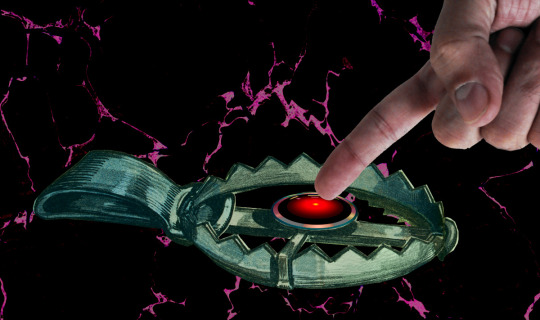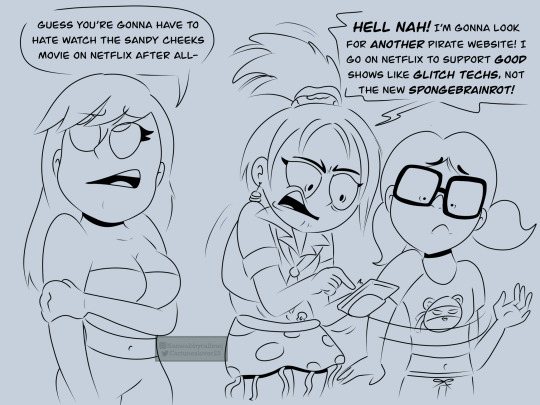#Streaming Tech
Explore tagged Tumblr posts
Text

Building Secure Video Streaming with Signed URLs
𝗤𝘂𝗶𝗰𝗸 𝗰𝗵𝗲𝗰𝗸: 𝗜𝘀 𝘆𝗼𝘂𝗿 𝘃𝗶𝗱𝗲𝗼 𝗰𝗼𝗻𝘁𝗲𝗻𝘁 𝗿𝗲𝗮𝗹𝗹𝘆 𝘀𝗲𝗰𝘂𝗿𝗲, 𝗼𝗿 𝗷𝘂𝘀𝘁 𝗼𝗻𝗲 𝗹𝗶𝗻𝗸 𝗮𝘄𝗮𝘆 𝗳𝗿𝗼𝗺 𝗯𝗲𝗶𝗻𝗴 𝘀𝗵𝗮𝗿𝗲𝗱 𝗲𝘃𝗲𝗿𝘆𝘄𝗵𝗲𝗿𝗲?
If you're building an OTT platform, an edtech portal, or even a private training hub, controlling access to your videos is a must, not a maybe.
At Brainstream, we recently implemented Signed URLs to help one of our clients lock down their video content 🔐. It’s like giving users a one-time key that works only under the right conditions and nowhere else.
We’ve written a short blog to break down:
What signed URLs actually are
When you should use them
How they can keep your content secure without breaking the user experience
Check it out here 👉 https://brainstreamtechnolabs.com/building-secure-video-streaming-with-signed-urls/
If you're building something video-driven, this might be worth a read. Curious to hear how others are approaching video security.
1 note
·
View note
Text
youtube
Logitech announced their latest product, the Logitech MX Creative Console. Check out the full review on my YouTube Channel!
#logitech#logitech mx creative console#editing#editing help#tech review#streaming tech#technology#Youtube
0 notes
Text
AI and the fatfinger economy

I'm on a 20+ city book tour for my new novel PICKS AND SHOVELS. Catch me at NEW ZEALAND'S UNITY BOOKS in WELLINGTON TODAY (May 3). More tour dates (Pittsburgh, PDX, London, Manchester) here.

Have you noticed that all the buttons you click most frequently to invoke routine, useful functions in your device have been moved, and their former place is now taken up by a curiously butthole-esque icon that summons an unwanted AI?
https://velvetshark.com/ai-company-logos-that-look-like-buttholes
These traps for the unwary aren't accidental, but neither are they placed there solely because tech companies think that if they can trick you into using their AI, you'll be so impressed that you'll become a regular user. To understand why you find yourself repeatedly fatfingering your way into an unwanted AI interaction – and why those interactions are so hard to exit – you have to understand something about both the macro- and microeconomics of high-growth tech companies.
Growth is a heady advantage for tech companies, and not because of an ideological commitment to "growth at all costs," but because companies with growth stocks enjoy substantial, material benefits. A growth stock trades at a higher "price to earnings ratio" ("P:E") than a "mature" stock. Because of this, there are a lot of actors in the economy who will accept shares in a growing company as though they were cash (indeed, some might prefer shares to cash). This means that a growing company can outbid their rivals when acquiring other companies and/or hiring key personnel, because they can bid with shares (which they get by typing zeroes into a spreadsheet), while their rivals need cash (which they can only get by selling things or borrowing money).
The problem is that all growth ends. Google has a 90% share of the search market. Google isn't going to appreciably increase the number of searchers, short of desperate gambits like raising a billion new humans to maturity and convincing them to become Google users (this is the strategy behind Google Classroom, of course). To continue posting growth, Google needs gimmicks. For example, in 2019, Google intentionally made Search less accurate so that users would have to run multiple queries (and see multiple rounds of ads) to find the answers to their questions:
https://www.wheresyoured.at/the-men-who-killed-google/
Thanks to Google's monopoly, worsening search perversely resulted in increased earnings, and Wall Street rewarded Google by continuing to trade its stock with that prized high P:E. But for Google – and other tech giants – the most enduring and convincing growth stories comes from moving into adjacent lines of business, which is why we've lived through so many hype bubbles: metaverse, web3, cryptocurrency, and now, of course, AI.
For a company like Google, the promise of these bubbles is that it will be able to double or triple in size, by dominating an entirely new sector. With that promise comes peril: growth must eventually stop ("anything that can't go on forever eventually stops"). When that happens, the company's stock instantaneously goes from being a "growth stock" to being a "mature stock" which means that its P:E is way too high. Anyone holding growth stock knows that there will come a day when those stocks will transition, in an eyeblink, from being undervalued to being grossly overvalued, and that when that day comes, there will be a mass sell-off. If you're still holding the stock when that happens, you stand to lose bigtime:
https://pluralistic.net/2025/03/06/privacy-last/#exceptionally-american
So everyone holding a growth stock sleeps with one eye open and their fists poised over the "sell" button. Managers of growth companies know how jittery their investors are, and they do everything they can to keep the growth story alive, as a matter of life and death.
But mass sell-offs aren't just bad for the company – it's also very bad for the company's key employees, that is, anyone who's been given stock in addition to their salary. Those people's portfolios are extremely heavy on their employer's shares, and they stand to disproportionately lose in the event of a selloff. So they are personally motivated to keep the growth story alive.
That's where these growth-at-all-stakes maneuvers bent on capturing an adjacent sector come from. If you remember the Google Plus days, you'll remember that every Google service you interacted with had some important functionality ripped out of it and replaced with a G+-based service. To make sure that happened, Google's bosses decreed that the company's bonuses would be tied to the amount of G+ activity each division generated. In companies where bonuses can amount to 90% of your annual salary or more, this was a powerful motivator. It meant that every product team at Google was fully aligned on a project to cram G+ buttons into their product design. Whether or not these made sense for users, they always made sense for the product team, whose ability to take a fancy Christmas holiday, buy a new car, or pay their kids' private school tuition depended on getting you to use G+.
Once you understand how corporate growth stories are converted to "key performance indicators" that drive product design, many of the annoyances of digital services suddenly make a great deal of sense. You know how it's almost impossible to watch a show on a streaming video service without accidentally tapping a part of the screen that whisks you to a completely different video?
The reason you have to handle your phone like a photonegative while watching a movie – the reason every millimeter of screen real-estate has been boobytrapped with an icon that takes you somewhere else – is that streaming services believe that their customers are apt to leave when they feel like there's nothing new to watch. These bosses have made their product teams' bonuses dependent on successfully "recommending" a show you've never seen or expressed any interest in to you:
https://pluralistic.net/2022/05/15/the-fatfinger-economy/
Of course, bosses understand that their workers will be tempted to game this metric. They want to distinguish between "real" clicks that lead to interest in a new video, and fake fatfinger clicks that you instantaneously regret. The easiest way to distinguish between these two types of click is to measure how long you watch the new show before clicking away.
Of course, this is also entirely gameable: all the product manager has to do is take away the "back" button, so that an accidental click to a new video is extremely hard to cancel. The five seconds you spend figuring out how to get back to your show are enough to count as a successful recommendation, and the product team is that much closer to a luxury ski vacation next Christmas.
So this is why you keep invoking AI by accident, and why the AI that is so easy to invoke is so hard to dispel. Like a demon, a chatbot is much easier to summon than it is to rid yourself of.
Google is an especially grievous offender here. Familiar buttons in Gmail, Gdocs, and the Android message apps have been replaced with AI-summoning fatfinger traps. Android is filled with these pitfalls – for example, the bottom-of-screen swipe gesture used to switch between open apps now summons an AI, while ridding yourself of that AI takes multiple clicks.
This is an entirely material phenomenon. Google doesn't necessarily believe that you will ever want to use AI, but they must convince investors that their AI offerings are "getting traction." Google – like other tech companies – gets to invent metrics to prove this proposition, like "how many times did a user click on the AI button" and "how long did the user spend with the AI after clicking?" The fact that your entire "AI use" consisted of hunting for a way to get rid of the AI doesn't matter – at least, not for the purposes of maintaining Google's growth story.
Goodhart's Law holds that "When a measure becomes a target, it ceases to be a good measure." For Google and other AI narrative-pushers, every measure is designed to be a target, a line that can be made to go up, as managers and product teams align to sell the company's growth story, lest we all sell off the company's shares.

If you'd like an essay-formatted version of this post to read or share, here's a link to it on pluralistic.net, my surveillance-free, ad-free, tracker-free blog:
https://pluralistic.net/2025/05/02/kpis-off/#principal-agentic-ai-problem

Image: Pogrebnoj-Alexandroff (modified) https://commons.wikimedia.org/wiki/File:Index_finger_%3D_to_attention.JPG
CC BY-SA 3.0 https://creativecommons.org/licenses/by-sa/3.0/deed.en
--
Cryteria (modified) https://commons.wikimedia.org/wiki/File:HAL9000.svg
CC BY 3.0 https://creativecommons.org/licenses/by/3.0/deed.en
#pluralistic#kpis#incentives matter#ui#ux#video streaming#google plus#g plus#ai#artificial intelligence#growth stocks#business#big tech
611 notes
·
View notes
Text
Amazon’s recent decision to stop allowing people to download copies of their Kindle e-books to a computer has vindicated some of my longstanding beliefs about digital media. Specifically, that it doesn’t exist and you don’t own it unless you can copy and access it without being connected to the internet. The recent move by the megacorp and its shiny-headed billionaire CEO Jeff Bezos is another large brick in the digital wall that tech companies have been building for years to separate consumers from the things they buy—or from their perspective, obtain “licenses” to. Starting Wednesday, Kindle users will no longer be able to download purchased books to a computer, where they can more easily be freed of DRM restrictions and copied to e-reader devices via USB. You can still send ebooks to other devices over WiFi for now, but the message the company is sending is one tech companies have been telegraphing for years: You don’t “own” anything digital, even if you paid us for it. The Kindle terms of service now say this, explicitly. “Kindle Content is licensed, not sold, to you,” meaning you don’t “buy a book,” you obtain a “digital content license.”
[...]
Amazon is far from alone in this long-running trend towards eliminating digital ownership. For many people, digital distribution and streaming services have already practically ended the concept of owning and controlling your own media files. Spotify is now almost synonymous with music for some younger generations, having strip-mined the music industry from both ends by demonetizing more than 60% of the artists on its platform and pushing algorithmic slop while simultaneously raising subscription fees. Of course, surrendering this control means being at the complete mercy of Amazon and other platforms to determine what we can watch, read, and listen to—and we’ve already seen that these services frequently remove content for all sorts of reasons. Last October, one year after the Israeli military began its campaign of genocide in Gaza, Netflix removed “Palestinian Stories,” a collection of 19 films featuring Palestinian filmmakers and characters, saying it declined to renew its distribution license. Amazon also once famously deleted copies of 1984 off of people’s Kindles. Fearing piracy, many software companies have moved from the days of “Don’t Copy That Floppy” to the cloud-based software-as-a-service model, which requires an internet connection and charges users monthly subscription fees to use apps like Photoshop. No matter how you look at it, digital platforms have put us on a path to losing control of any media that we can’t physically touch. How did we get here?
28 February 2025
138 notes
·
View notes
Text
Hell you mean he’s gonna be in THE ACTUAL ISLAND OF ITHACA???
youtube
Captain GET OFF THAT BOAT RN BEFORE POSEIDON GETS HIS RING NOTIF
Also Jorge thank you from the bottom of my heart that you’re not holding at 10 pm so I’m only crying at 11:30 and not 12:30 am
also the entire cast is going? That’s so coo-
……
wait a minute.
THIS MEANS THAT POLITIES, EURYLOCHUS, PERIMEDES, ELPENOR ETC ARE GETTING BACK TO ITHACA AFTER ALL 😭🤍😭🤍😭🤍😭🤍😭🤍😭🤍😭🤍😭
#Sobbing at my own revelation#it might depend on what kind of tech problem fucks up the stream this time#bro is going all out and I’m here for it#ithaca listening party#epic#epic fandom#odyssey#epic the musical#epicthemusical#odysseus#epic musical#epic the musical ithaca saga#odysseus of ithaca#jorge rivera herrans#jorgy gorgy#CAPTAIN#king of the winions#Have a fun vacation captain#you’ve earned it#Youtube#well#WHOS READY TO CRY
64 notes
·
View notes
Text



Fangirls and the news of Kimcartoon
All it takes is a Google search
#I only have TWO streaming accounts and they’re for both my dad and I (Netflix and DisneyPlus)#fangirls#my ocs#ocs#oc#oc stuff#oc art#oc artwork#oc artist#kimcartoon#fanart#netflix#spongebob squarepants#spongebob#the sandy cheeks movie#sandy cheeks movie#glitch techs
71 notes
·
View notes
Text









Squisherz (Hypnospace Outlaw) stimboard for me!
X X X
X X X
X X X
#hypnospace outlaw#squisherz#squishy#slime#tech#hands#white#purple#blue#green#pink#stimboard#stimblr#stim#to be clear i have NOT played this game and didnt really follow the story gjfdkh#i watched jaymoji's stream and was highly amused by his fixation on the squisherz collecting
48 notes
·
View notes
Text
every year I set the new year goal to "definitely start streaming!" and I never get around to it... BUT I never give up, so maybe next year could be the year (spinning) let's see
#i am blogging#tbh I was on semi hiatus for the past. Years#but I am growing and healing and Yay#I just worry as I have no experience streaming and I'm not always tech savvy lol#but I'm sure I could learn :3#I love the thought of doing stream requests#and getting to control the music that's all this is about#and I could play games!#I even made a pngtuber last year I can use Yay
21 notes
·
View notes
Text
I would love to find a way to cast the video feed from online pirating websites like wcofun.com to our big TV. Because sometimes I want to share with my dad and watch stuff with him, and that's impossible when streaming services and cable only provide so much. One example: The Batman (2004). Not available anywhere up here in Canada (unless we pay for a new streaming service, i think). And that's shameful. Because I would love to play some of that show with my dad. There's other things i'd love to share too, but it's almost impossible when you can't hook these internet websites onto your big screen tv. It makes me sad.
#i wish it was easier to get this stuff to work#i really do#because there's so much it would help me watch with him#sigh...#tv#television#technology#watching stuff online#watching tv online#streaming sites#wco fun#tech help#autism#asd#autistic#neurodivergent#my thoughts#thoughts#random thoughts#the batman 2004#batman#batman 2004#dc#actually autistic#adhd#audhd#vent#rant#rantings#ranting
12 notes
·
View notes
Text
wearing my nct shirt to the gynecologist tomorrow so she knows i'm not sexually active without having to ask
#nct#neo culture technology#neo got my back#culture things tech tech on my mind#nshitty#ncity#lee taeyong supremacy#nct 127#nct u#nct dream#nct wish#wayv#nct 2018#nct 2020#superm#mark lee i love you#stream completely#jaehyun jaehyussy#foreign swaggers
32 notes
·
View notes
Text
streaming has ruined the sanctity of albums.
an album, as a unit, used to be something you could listen to in its entirety, and you could get into the vibe of the album by itself.
but because of ads being jammed between songs, the nice transitions between each one are wasted. the music artist/band has gone through the effort of making the songs melt together- so they feel like one whole thing rather than individual songs. but NO. i absolutely NEED to hear about this new shampoo or medication or credit card.
everyone should have an ipod. or a nice cd player. ive always used streaming, so i didnt realize until i got rlly fixated on ipods and such, but physical media is objectively better for experiencing music in general. you just have the music- not ads or buffering or paywalls* or anything that takes away from it
* "but alex! cds and digital downloads cost money!" ➡️ 💿💿💿💿💿💿💿💿 ⬅️
TLDR: streaming takes away from the experience of listening to music, physical media is better.
#soundcloud put one too many ads during my listening of Marvin's Marvelous Mechanical Museum by Tally Hall#and now im making it tumblr's problem#(also capitalism sucks... thats also another point)#alx made that#shitpost#me core#physical media#cds#dvds#ipod#old tech#old technology#streaming#music streaming#spotify#soundcloud#long rant#rant post#personal rant#pirating
11 notes
·
View notes
Text
Want to watch us (Fio & Georgia) figure out Twitch?
Come join us at 8pm GMT today where we'll talk Holmwood, do some drawing & have an informal Q&A, prepping for streaming fun during our Kickstarter!
twitch_live
#there will be tech difficulties but please do join us!#the holmwood foundation#the holmwood foundation podcast#dracula#fiction podcast#audio drama#kickstarter#twitch stream
23 notes
·
View notes
Text

what the fuck is this shit
#shitpost#196#r196#r/196#idk what to put here#trans#twitch#streaming#streamers#streamer#tech#technology
23 notes
·
View notes
Text






Sketch commissions fulfilled so far! for @myrrhemaid, @cawsket, dandeswife on twitter, @arctictisa, @onitekkart, and NerdyMangle on twitter.
#commission art#sketch commission#for my e-sim for gaza drive! finishing up one rn#I will! try and fit one last stream in the drive open time frame. but if it happens its gonna be a late one for me#hope my stream tech stuff doesnt go to shit again all of a sudden lol. youtube is Really fickle tech-wise#thank you again so much to everyone who donated an e-sim! its an honor to have the chance and the help to put in this effort
67 notes
·
View notes
Text

New speech difficulties not stop us from being menace on Twitch >:3 /silly
#aac user#aac#thecouncil aac#aac app#high tech aac#aac community#aac communication#aac tour#aac positivity#aac device#aac setup#aac board#twitch#twitch stream#twitch streamer#streamer#small streamer#disabled streamer#semiverbal#semiverbal streamer#aac streamer
12 notes
·
View notes
Note
hellooo zircon, for no particular reason (/silly) do you have any tips for beginner streamers? Your streams are always clean and well put together esp from a technical side imo so I trust your advice on this one :) - @helsex
This is gonna be long so get comfy.
#1 best tip: Get familiar with your streaming software of choice (most likely OBS) and don't be afraid to play with it. Your first streams are not gonna be a polished as you'd like no matter what you do. You don't need to know the software inside and out to use it well and familiarity will come with use. The best approach (in my opinion) is to figure out what you like in other streams and figure out how to do that for yourself, don't worry about learning absolutely everything right from the start.
Another good tip is to do some mic checks beforehand, if you just record instead of streaming you'll be able to see what your mic sounds like on stream, and there are tons of tutorials out there for figuring out mic settings (this is the one I followed I think, although with some differences just for my own preference).
Yet another helpful resource: this is a link to an obs plugin that will help manage audio sources so you can actually control what plays on stream, instead of it just playing your whole desktop audio. (I think OBS has a version of this going now? But I tried using it and didn't get far) You'll have to add an audio source individually for each application but the greater control is a godsend.
For overlays (things like chat on stream and alerts that play when people follow/subscribe/raid that sort of thing), there's a few routes you can go down. Twitch has their own alerts thing but personally I use streamelements (they also have a very popular chatbot which I don't use myself but may be worth looking into if that's something you want). Whichever service you end up using should give you some sort of link, which will be added to your obs as a Browser Source. (Also if you're using the obs plugin I linked, the browser source audio would be under the name "obs-browser-page.exe" after you set up the browser source)
My final bit of advice is that hotkeys are your friends! It is absolutely worth setting up a few hotkeys to make controlling your stream while in game easy. Personally I have hotkeys set up for toggle muting my my mic and discord audio, as well as for changing between my most common scenes (Also my catcam when my animals deign to show up). Typically if you are just using a regular keyboard you'll want to use key combinations as hotkeys to avoid accidentally activating one while trying to type in game (Something I have done many a time, but hey you never stop learning!).
Shoutout to @addaxbones for teaching me literally everything I know about streaming btw. He's the guy that got me into this mess and also the reason I met most of my friends today. (love that guy)
One last thing under the readmore to cover my shame /silly:
I am flattered you consider my streams "clean and well put together", and you can maybe take this as proof that on screen != behind the scenes, but here is my desktop from a few streams ago, not a tidy look I can tell you that.

It doesn't normally get this bad, but it's also not a whole lot better.
#letters opened#streamer moment#I had to edit out me saying 'one more thing' like 4 times in here. I feel like Columbo#I mostly focused on the tech side here since that's what I figured the ask meant mostly but I could also do something like this again#and focus more on the 'on screen' side of streaming#although really my tips there are much shorter since I don't do a ton of 'performing' anyway#I do have some tips but if I don't stop myself I'll put them all here in the tags
43 notes
·
View notes